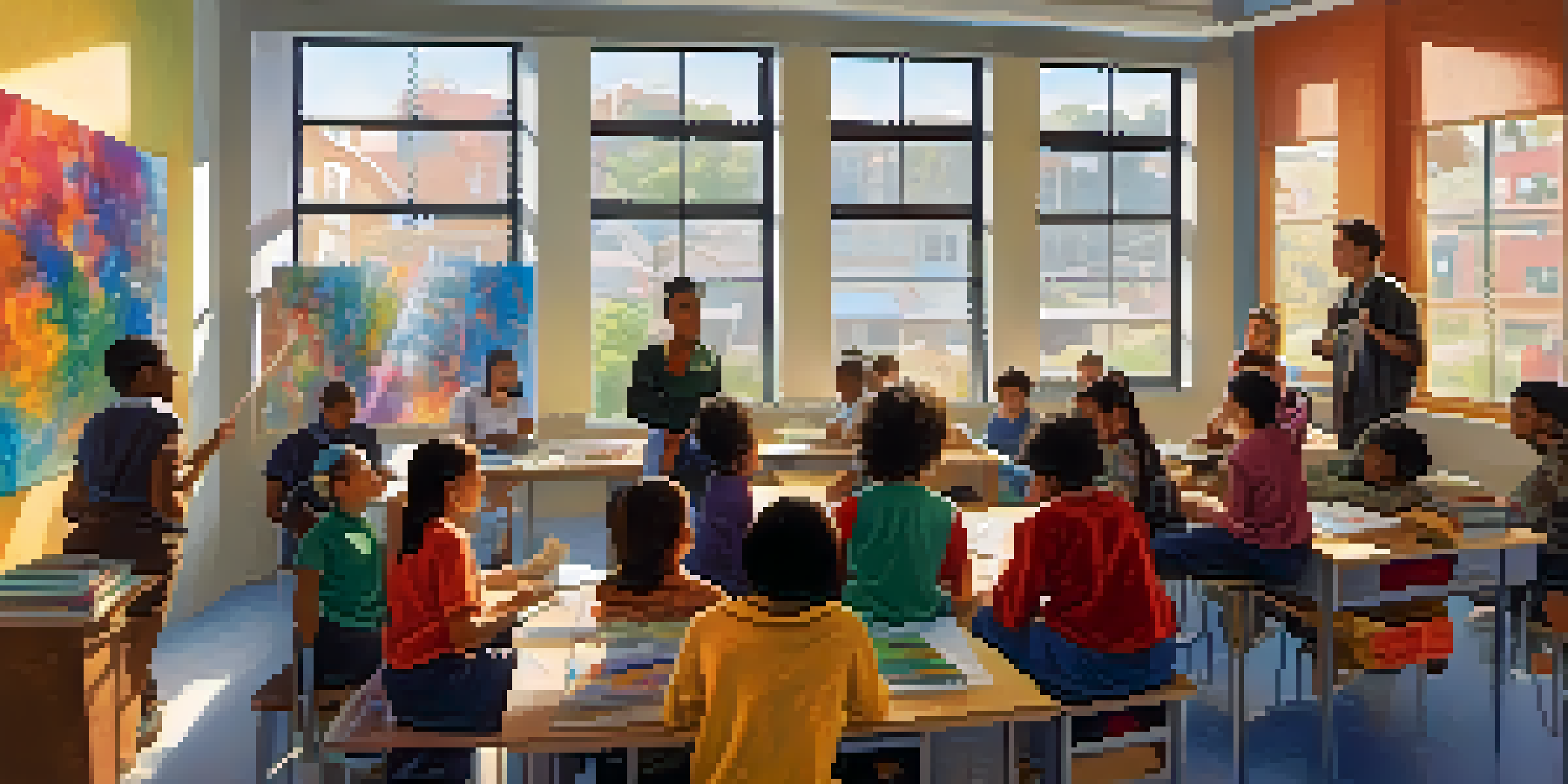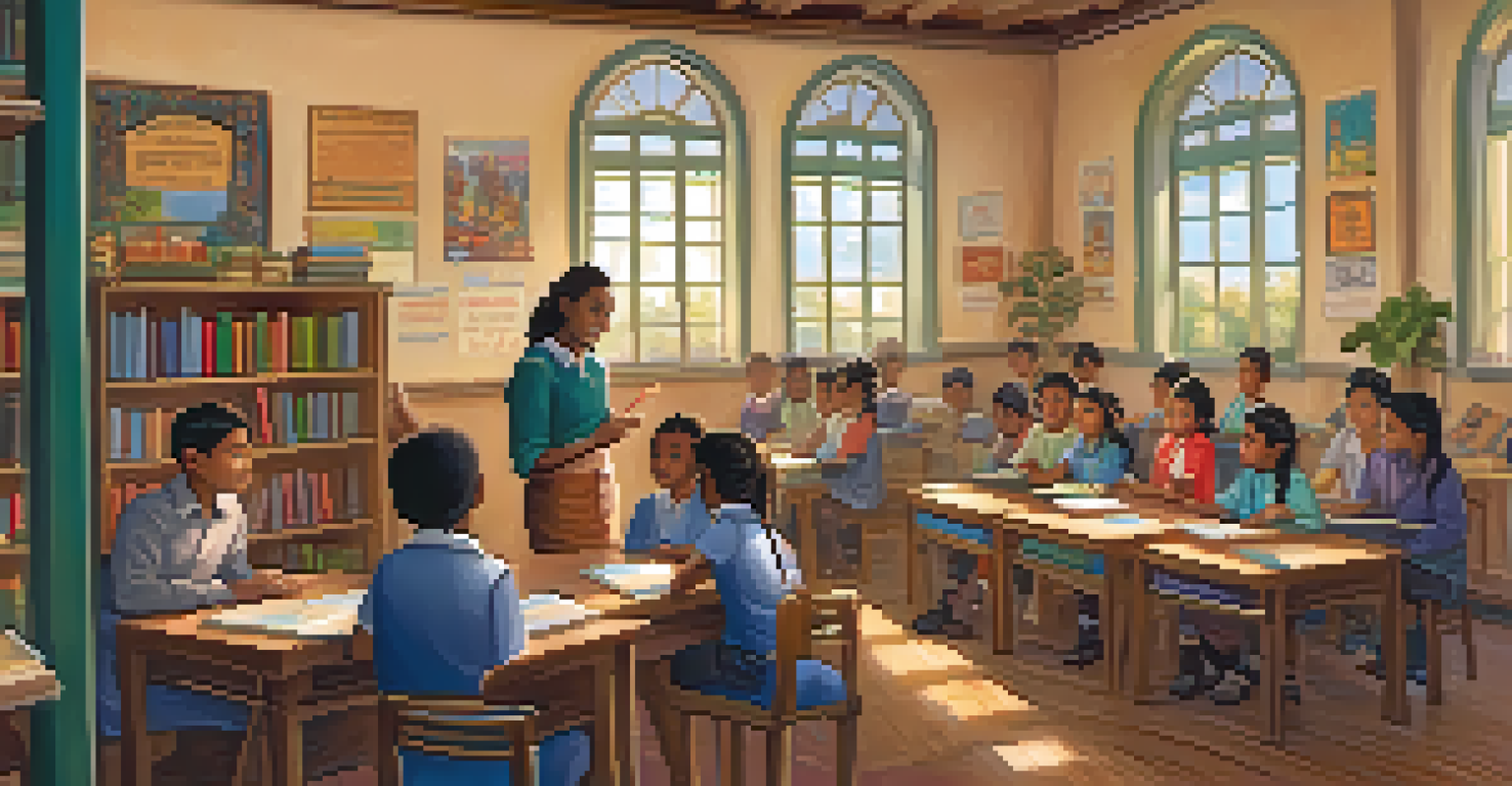Navigating Cultural Competence in Learning Pathways

Understanding Cultural Competence in Education
Cultural competence refers to the ability to understand, communicate, and interact effectively with people from diverse backgrounds. In educational settings, this means recognizing the unique cultural identities of students and integrating those into the learning process. When educators embrace cultural competence, they not only foster inclusivity but also enhance student engagement and achievement.
Cultural competence is the ability to understand, appreciate, and interact with people from cultures or belief systems different from one’s own.
For example, a teacher who incorporates examples from various cultures in their lessons opens doors for students to relate to the material. This practice not only validates their experiences but also enriches the learning environment for everyone. By acknowledging cultural differences, educators can create a more holistic educational experience that reflects the diversity of their students.
Ultimately, cultural competence is about more than just awareness; it’s about action. It requires educators to actively seek out and implement strategies that support all students, ensuring that everyone feels valued and understood in their learning journey.
The Importance of Diverse Learning Pathways
Diverse learning pathways are essential for accommodating the different ways students learn. Each student comes to the classroom with a unique background, influencing how they process information. By offering various pathways—such as hands-on activities, visual aids, and collaborative projects—educators can cater to these diverse learning styles.

Consider a classroom where some students thrive through visual learning while others excel in auditory settings. By providing multimedia resources and group discussions, a teacher can create an environment where all students can access the curriculum effectively. This approach not only supports individual learning needs but also cultivates an inclusive atmosphere.
Cultural Competence Enhances Learning
Understanding and integrating students' diverse cultural backgrounds fosters inclusivity and boosts engagement in the classroom.
Incorporating multiple pathways ensures that educational content is accessible to everyone, allowing students to engage with the material in ways that resonate with them. This flexibility enhances understanding and retention, leading to improved academic outcomes.
Building Relationships Through Cultural Engagement
Building strong relationships is at the heart of effective teaching and learning. When educators engage with students' cultural backgrounds, they create a foundation of trust and respect. This relationship can significantly enhance student motivation and participation in the classroom.
Education is the most powerful weapon which you can use to change the world.
For instance, a teacher might invite students to share stories about their heritage or traditions, fostering an environment where all voices are heard. This practice not only enriches classroom discussions but also encourages students to learn from one another. As students share their experiences, they develop empathy and a greater appreciation for diversity.
These relationships are crucial for creating a sense of belonging, which is essential for student success. When students feel connected to their educators and peers, they're more likely to take risks in their learning and strive for excellence.
Strategies for Incorporating Cultural Competence
Integrating cultural competence into educational practices can be achieved through specific strategies. One effective approach is professional development for educators, focusing on cultural awareness and inclusive teaching practices. Workshops and training can equip teachers with the tools they need to create culturally responsive classrooms.
Additionally, incorporating diverse materials and resources into the curriculum is essential. Texts and media that reflect various cultures help students see themselves in what they learn. This representation not only validates their identities but also fosters a broader understanding of the world.
Diverse Pathways Support All Learners
Offering various learning pathways accommodates different learning styles, ensuring that all students can engage with the curriculum effectively.
Lastly, encouraging student voice is crucial. Providing platforms for students to express their thoughts and cultural perspectives can lead to richer classroom discussions and a deeper appreciation for diversity.
Challenges in Achieving Cultural Competence
While striving for cultural competence is essential, it does come with its challenges. One significant hurdle is the potential for unconscious biases to influence teaching practices. Teachers must actively reflect on their own biases and how these may affect their interactions with students.
Another challenge is the varying levels of cultural competence among educators. Not all teachers have the same knowledge or understanding of different cultures, which can lead to gaps in student support. Continuous education and collaboration among staff can help bridge these gaps and promote a more unified approach.
Lastly, navigating the cultural differences among students can be complex. Educators must be prepared to address misunderstandings and create a safe space for dialogue. Open communication and a willingness to learn from one another are key to overcoming these challenges.
Measuring Cultural Competence in Learning Environments
Assessing cultural competence in educational settings is vital for ongoing improvement. This can be done through surveys and feedback from students, parents, and faculty to gauge how well cultural diversity is being acknowledged and integrated. Understanding the perceptions of all stakeholders helps identify areas for enhancement.
Additionally, observing classroom interactions can provide insights into how well educators are incorporating cultural competence. Are students engaging with diverse materials? Are they feeling comfortable sharing their backgrounds? These observations can guide professional development and curriculum adjustments.
Building Trust Through Engagement
Strong relationships between educators and students, built through cultural engagement, enhance motivation and create a sense of belonging.
Ultimately, measuring cultural competence is about creating accountability. By regularly assessing these practices, educators can ensure that they are meeting the diverse needs of their students and fostering an inclusive learning environment.
The Future of Cultural Competence in Education
As our world becomes increasingly interconnected, the need for cultural competence in education will only grow. The future demands educators who are well-versed in cultural diversity and equipped to handle the complexities of a globalized society. This will prepare students not just academically, but also socially and emotionally for the world they will enter.
Innovations in technology and educational resources will play a significant role in enhancing cultural competence. Online platforms can provide access to global perspectives, allowing students to connect with peers from different backgrounds. This exposure can foster understanding and collaboration among diverse groups.

Ultimately, the future of education lies in embracing cultural competence as a core value. By prioritizing this aspect, we can create a generation of learners who are not only knowledgeable but also empathetic and culturally aware citizens.